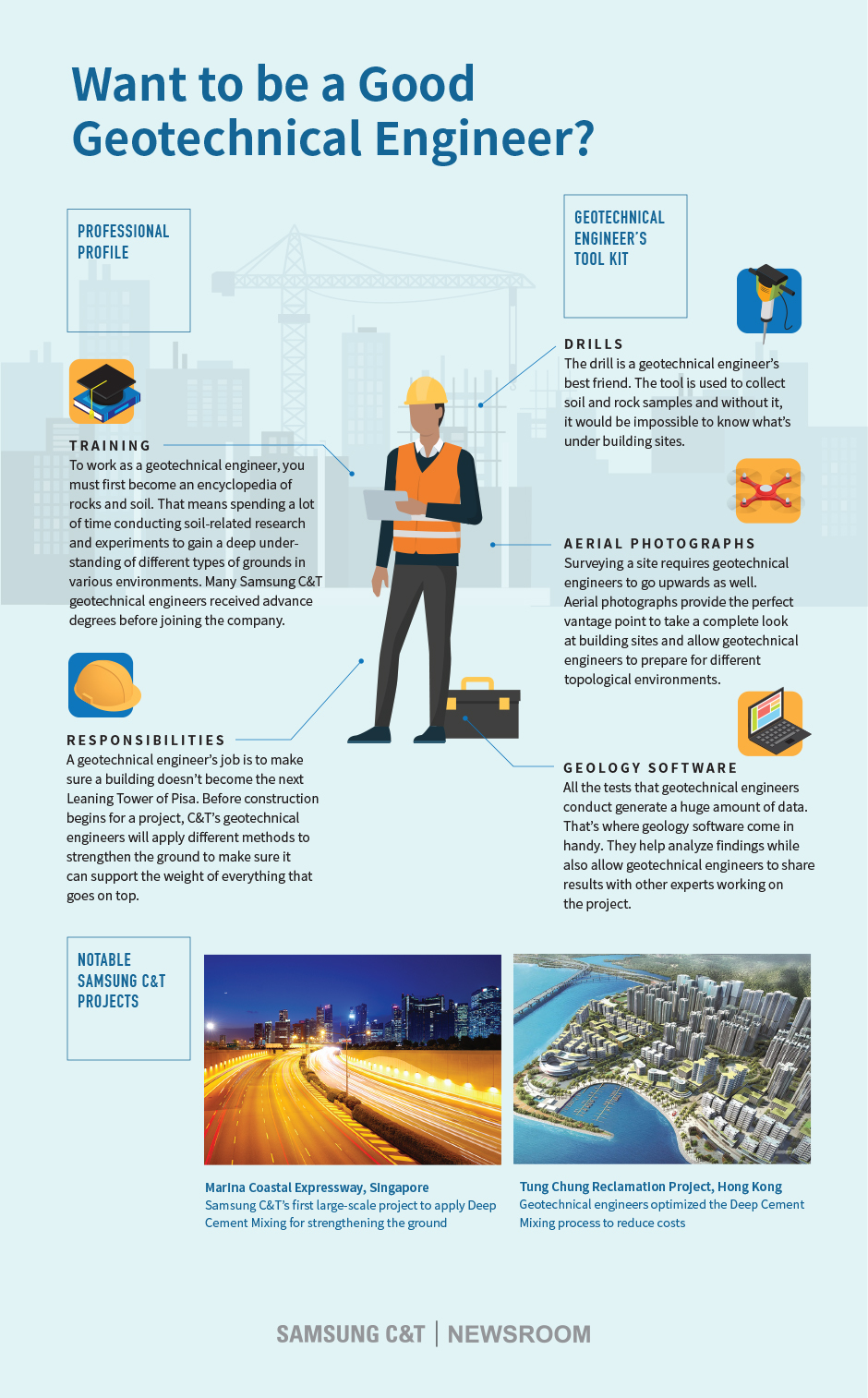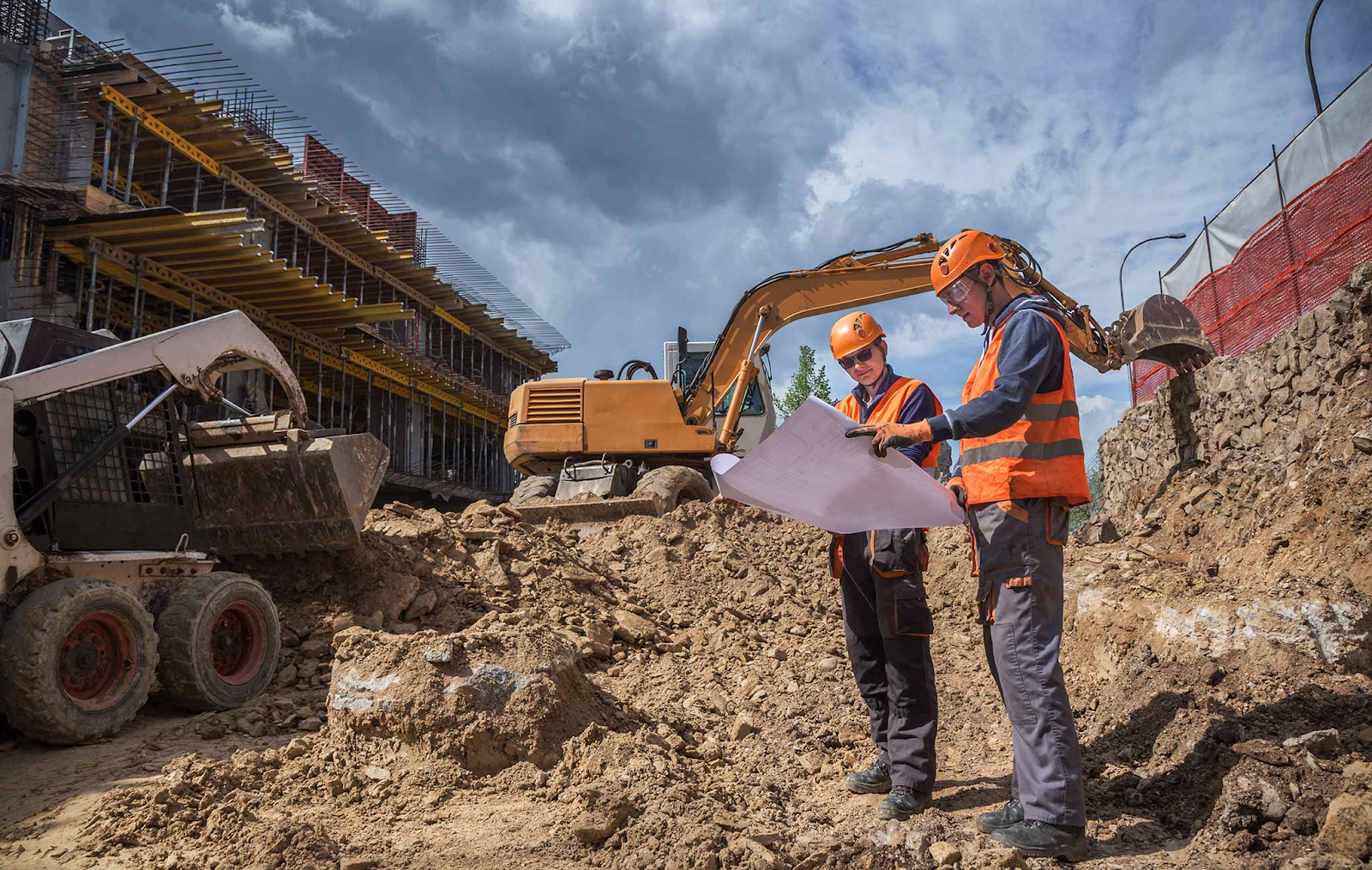Not known Facts About Geotechnical Engineering For Construction Projects
Not known Facts About Geotechnical Engineering For Construction Projects
Blog Article
Some Known Questions About Geotechnical Engineering For Construction Projects.
Table of Contents7 Easy Facts About Geotechnical Engineering For Construction Projects DescribedSome Known Incorrect Statements About Geotechnical Engineering For Construction Projects A Biased View of Geotechnical Engineering For Construction Projects7 Easy Facts About Geotechnical Engineering For Construction Projects Described10 Easy Facts About Geotechnical Engineering For Construction Projects Shown7 Easy Facts About Geotechnical Engineering For Construction Projects ShownExcitement About Geotechnical Engineering For Construction Projects
and Kovacs, W. (1981 ), An Introduction to Geotechnical Engineering, Prentice-Hall, Inc. Deep Check Tech (2023 ): Deep Check Tech reveals concealed frameworks at the website of Denmark's tallest structure. "Geofrost Coring". GEOFROST. Retrieved 20 November 2020. Han, Jie (2015 ). Principles and Practice of Ground Enhancement. Wiley. ISBN 9781118421307. RAJU, V. R.Ground Improvement Technologies and Situation Histories. Singapore: Study Posting Providers. p. 809. ISBN978-981-08-3124-0. Ground Renovation Principles And Applications In Asia. Pariseau, William G. (2011 ). Layout analysis in rock technicians. CRC Press. Hegde, A.M. and Palsule P (Geotechnical Engineering for Construction Projects).S. (2020 ), Performance of Geosynthetics Reinforced Subgrade Subjected to Repetitive Car Plenties: Speculative and Numerical Researches.
Cengage Understanding, Stamford, 666 p. Atkinson, J., 2007. The mechanics of dirts and structures. Taylor & Francis, N.Y., 442 p. Floating Offshore Wind Wind Turbines: Feedbacks in a Sea state Pareto Ideal Styles and Financial Evaluation, P. Sclavounos et al., October 2007. Nicholson, D, Tse, C and Cent, C. (1999 ). The Observational Technique in ground design principles and applications.
9 Simple Techniques For Geotechnical Engineering For Construction Projects
Laboratory and area testing plays an essential role in this procedure. By extracting examples from the planet's subsurface and applying a suite of tests, geotechnical designers can predict the behaviour of dirt layers and review their suitability for different building endeavours. The essence of geotechnical design in civil design can not be overstated, attributable to a number of aspects: The initial action in any geotechnical research entails identifying the soil kind at the building and construction website.
The structure acts as the bedrock of any type of building and construction project. Choosing the suitable foundation kind is a choice that pivots on the thorough evaluation offered by geotechnical engineering.

Geotechnical website investigation is a critical action in the planning and execution of any building and construction project. It involves the collection and analysis of information connected to the physical homes of soil and rock underneath a suggested building and construction site. This info is essential for the layout and building and construction of secure, stable, and sustainable frameworks.
Not known Details About Geotechnical Engineering For Construction Projects
, likewise recognized as subsurface exploration, includes a collection of activities intended at identifying the dirt, rock, and groundwater conditions at a building website. The main purposes are to identify prospective geotechnical threats, evaluate the design properties of subsurface materials, and supply referrals for the style and building and construction of foundations, preserving walls, and other structures.
This might include geological maps, aerial photographs, previous investigation records, and historical data. The workdesk research study helps in identifying prospective geotechnical concerns and intending the subsequent fieldwork. Following the desk study, a site reconnaissance is carried out to aesthetically evaluate the site and its surroundings. This involves observing the topography, drain patterns, existing structures, vegetation, and any type of indications of instability or erosion.
A Biased View of Geotechnical Engineering For Construction Projects
Shallow examination pits are dug deep into to directly observe and example the soil and rock. This method works for researching the upper layers of the subsurface and identifying near-surface threats. Non-invasive geophysical techniques, such as seismic refraction, ground-penetrating radar (GPR), and electric resistivity tomography (ERT), are utilized to map subsurface conditions and identify abnormalities.
Soil and rock examples accumulated during the area investigation undergo lab screening to determine their physical and mechanical residential properties. Common research laboratory examinations include grain dimension analysis, Atterberg restrictions, compaction tests, triaxial shear tests, and consolidation tests. These examinations supply vital data for geotechnical evaluation and design. The data accumulated from the desk research, site reconnaissance, area examination, and lab screening are evaluated and interpreted to establish a comprehensive understanding of the subsurface conditions.
The primary benefit of geotechnical site examination is making sure the safety and security and stability of structures. By recognizing the subsurface conditions, engineers can make structures and various other structural components that can endure the loads and ecological forces they will be subjected to. This lessens the risk of settlement, subsidence, and structural failing.
Not known Facts About Geotechnical Engineering For Construction Projects
Recognizing soil attributes can direct the choice of excavation strategies, dewatering approaches, and ground renovation steps. This guarantees reliable and risk-free building methods. Geotechnical site investigations are typically required by developing codes and laws. Sticking to these requirements makes certain compliance with legal and safety and security requirements, avoiding prospective lawful responsibilities and project hold-ups.
This info is important for task managers, designers, and professionals in creating sensible timetables, budgets, and backup strategies. Geotechnical Engineering for Construction Projects. High-Rise Structure in a Coastal AreaIn a coastal city, a skyscraper residential building was planned on a website with presumed loose sand deposits and a high water table. A thorough geotechnical examination, including borehole boring, CPT, and geophysical studies, was conducted
The Geotechnical Engineering For Construction Projects Ideas
Based upon these searchings for, the structure layout was changed to consist of deep heap structures extending right into secure strata, and ground improvement methods, such as vibro-compaction, were executed to alleviate liquefaction threats. This aggressive method guaranteed the security and stability of the structure while staying clear of pricey post-construction removal. Facilities Advancement on a Sloping TerrainA major framework project, involving the building and construction of a freeway and bridges, was prepared on an uneven terrain with steep inclines.

The Leaning Tower of Pisa (Italy), a legendary architectural marvel, is infamous for its unintended tilt from substantial geotechnical problems. The tower's foundation was inadequately developed to handle the soft, unpredictable dirt below it, leading to irregular settlement and its distinctive lean. Our globe is dotted with impressive infrastructure projectsfrom towering high-rises to sprawling bridgesall standing testament to the development of the different building equipment and approaches available.
Geotechnical design is a specific area within civil design that focuses on researching the behavior of planet products. This branch dives deep into the groundinvestigating just how the soil, rock, and groundwater at a building website can influenceand be affected bythe framework that we put up on and into them. Before a single brick is laid or a concrete structure put, geotechnical engineers probe into the earthgathering crucial information about the website's dirt composition, rock framework, and groundwater degrees.
Some Known Incorrect Statements About Geotechnical Engineering For Construction Projects

is a tool utilized to analyze the integrity and load-bearing capability of heaps during setup, leveraging the concept of wave breeding. It optimizes building efficiency by offering view it now real-time examinations, hence ensuring safe and effective stack foundations. One of the functional applications of geotechnical design includes determining and performing the ideal approaches for structure construction.
Stack driving stands for even more than the simple act of placing architectural components into the ground. As a matter of fact, it is a carefully orchestrated process of transferring a framework's tons past the much less secure dirt layers better to the surfacedown to the a lot more significant strata that exist underneath. When it comes to stack driving, consider how geotechnical engineers adeptly utilize this strategy to uniformly distribute the structure's weight.
Report this page